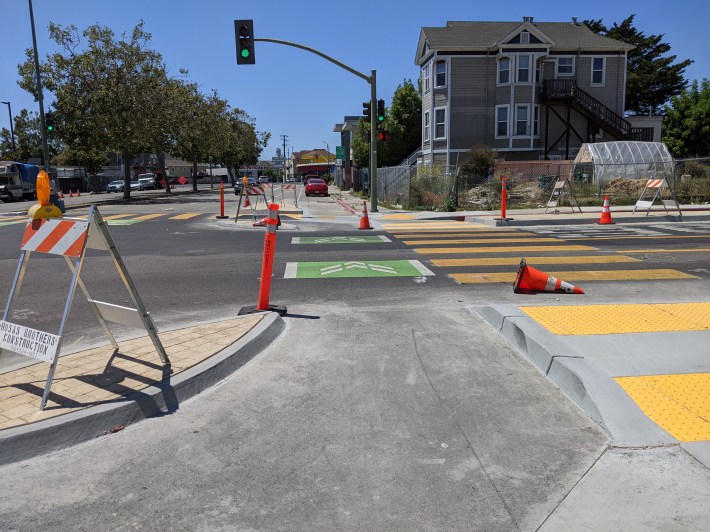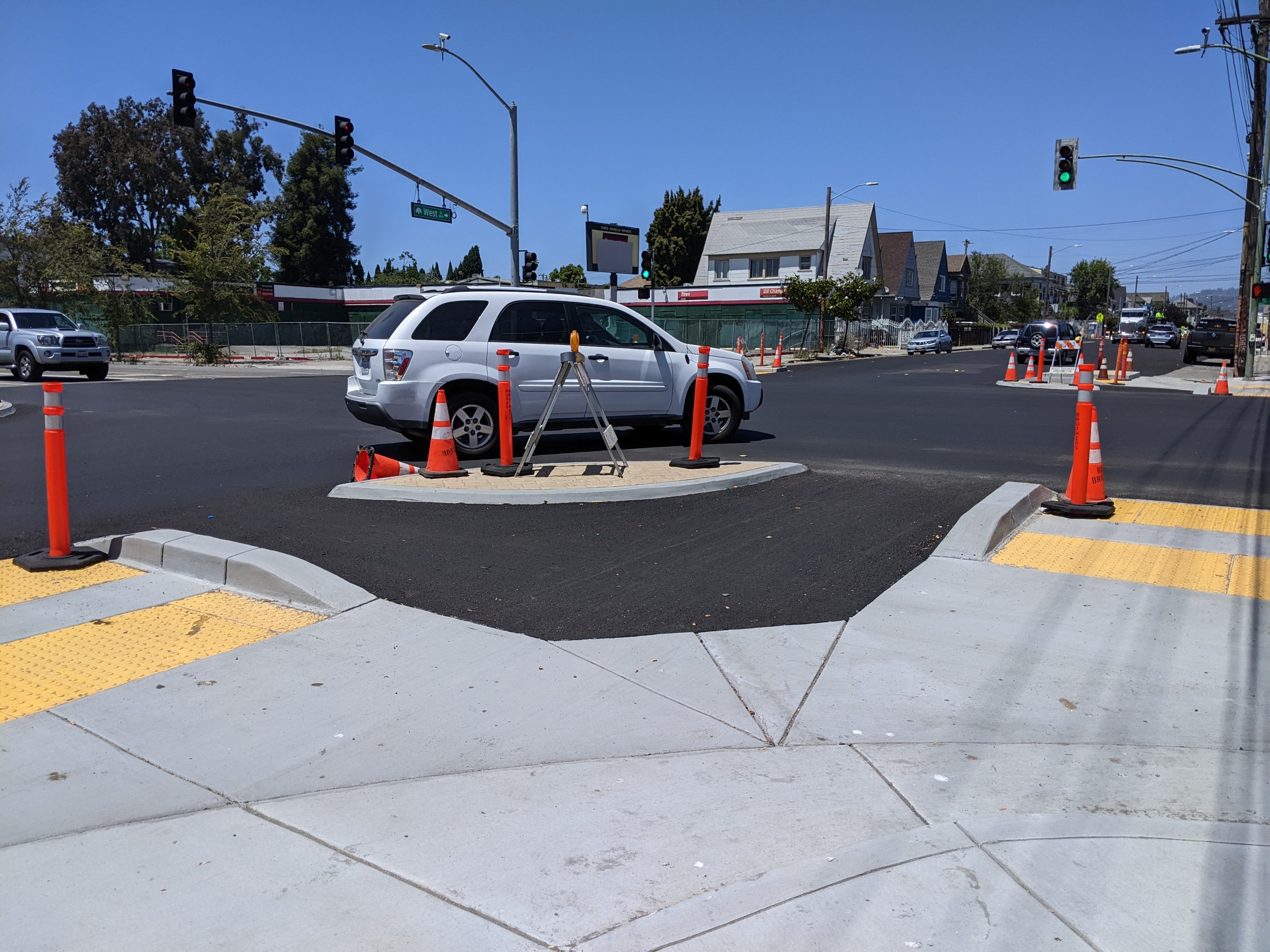Note: GJEL Accident Attorneys regularly sponsors coverage on Streetsblog San Francisco and Streetsblog California. Unless noted in the story, GJEL Accident Attorneys is not consulted for the content or editorial direction of the sponsored content.
Oakland's Department of Transportation is finishing two new protected intersections as part of its larger West Street road diet project. The protected intersections are at 27th and MacArthur.
From Oakland's web page on the project:
Project Design Elements
The project will pave the length of the street, upgrade curb ramps to meet accessibility standards, and install buffered bike lanes and high-visibility crosswalks. Other features include:
- raised pedestrian safety islands at six crosswalks;
- raised corner islands to slow turning vehicles and shorten bicycle and pedestrian crossings at 27th Street and W MacArthur Boulevard; and
- a median refuge area for northbound bicyclists crossing San Pablo Ave created by removing the northbound left turn pocket at Isabella St.
The project will replace the two-way center turn lane with a six-foot wide striped median and add striped buffers to the existing bike lanes.
Protected intersections are becoming more common around the Bay Area, because of their clear advantages for safety. As seen in the lead image, a forward island gives cyclists a place to wait where they are visible and protected by a curb. Motorists are forced to take turns slowly, otherwise they risk hitting the curb.
Oakland refers to them as intersections with "raised corner islands" in its communications.

Bike East Bay's Dave Campbell told Streetsblog he loves the protected intersections but is also pleased with the speed humps the project includes. "My favorite parts of the road diet are at 35th or 37th," he said. "There's a stop sign, but they put a speed hump right before it and right after."

Campbell said that's a treatment he first observed in Mexico City. He'd been urging OakDOT to use it here. "I came back here, why we can't do that here?" Campbell said the installation is working well to force motorists to stop, or at least slow significantly, at stop signs instead of blowing through them. "They stop or they blow a tire or their suspension is shot."
Campbell added that he liked the raised crosswalks and other features.

Outreach was also rather limited, he confirmed, which helped them get the project done faster. "They did more outreach than they would do for a straight repaving project, but it wasn't exhaustive." He pointed out that overly exhaustive outreach, as was done for Telegraph's protected bike lanes, ends up delaying projects and leaves dangerous infrastructure in place for years if not decades.
He hopes Oakland can eventually find a better way to balance outreach and the urgent need to make streets safer. West Street might be a better example of that balance. "How much outreach can you do? How much effort does it take? How helpful is it?"
Still, Streetsblog agrees with Campbell's one major criticism of the project--the decision to go with protected intersections and other improvements, but not protected bike lanes. "Any street with traffic volumes like West should get protected bike lanes," he said.

Streetsblog toured the project earlier this week and saw three motorists parked in the bike lane and one driving in it for several blocks. Clearly, protected intersections should be connected to protected bike lanes.
Streetsblog has inquiries out with OakDOT to try and find out why protected bike lanes were omitted and when this project will be finished, but the existing timeline shows completion this year, and the construction looks well along.





